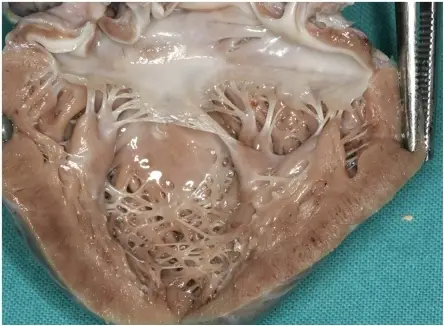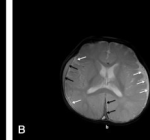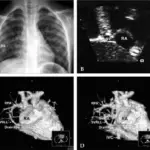Sudden infant death syndrome (SIDS) is the unexplained death, usually during sleep, of a seemingly healthy baby less than a year old.
What is the Pathology of Sudden Infant Death Syndrome (SIDS)?
The pathology of sudden infant death syndrome (SIDS) is:
-Etiology: The cause of sudden infant death syndrome (SIDS) is a gene or a change to the genes that cause certain health problems, or problems in the part of the brain that controls breathing, heart rate, blood pressure, temperature, and waking from sleep.
-Genes involved: 22q11 deletion syndrome, trisomy 21, 18, and 13.
-Pathogenesis: The sequence of events that lead to sudden infant death syndrome (SIDS) is the infant has an underlying (e.g., brainstem) abnormality that makes him unable to respond to low oxygen or high carbon dioxide blood levels, the infant is exposed to a triggering event such as sleeping face down on its tummy, and these events occur during a vulnerable stage in the infant’s development, i.e., the first six months of life.
How does Sudden Infant Death Syndrome (SIDS) Present?
Patients with sudden infant death syndrome (SIDS) typically are either males or females present at the age range of less than 1 year. The symptoms, features, and clinical findings associated with sudden infant death syndrome (SIDS) include its association with problems in the ability of the baby to arouse from sleep, to detect low levels of oxygen, or a buildup of carbon dioxide in the blood. Babies may re-breathe exhaled carbon dioxide when they sleep face down. In SIDS babies, rising carbon dioxide levels don’t activate nerve cells in the brainstem which stimulate the brain’s respiratory and arousal centers.
How is Sudden Infant Death Syndrome (SIDS) Diagnosed?
Sudden infant death syndrome (SIDS) is diagnosed only when all other causes of death have been excluded following a death scene investigation, an autopsy, and a review of the clinical history.
How is Sudden Infant Death Syndrome (SIDS) Treated?
Sudden infant death syndrome (SIDS) is treated with reducing the baby’s risk of SIDS by putting a baby to sleep on his back, using a firm sleep surface, and keeping fluffy blankets and stuffed animals out of his/her crib, not overheating a baby or his room when he/she sleeps, not smoking when pregnant and not allowing anyone to smoke around a baby, and breastfeeding.
What is the Prognosis of Sudden Infant Death Syndrome (SIDS)?
The prognosis of sudden infant death syndrome (SIDS) is poor.



